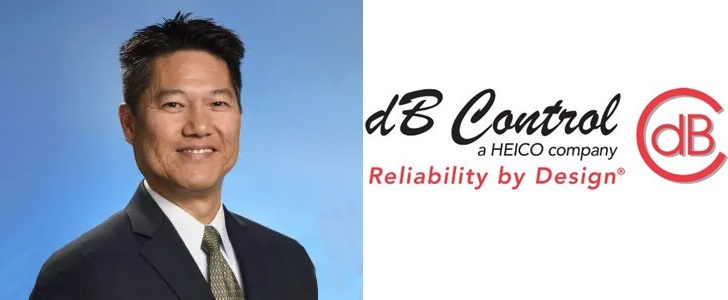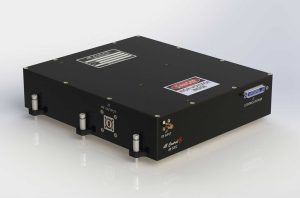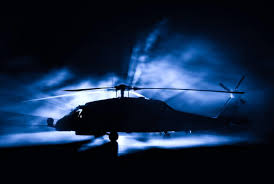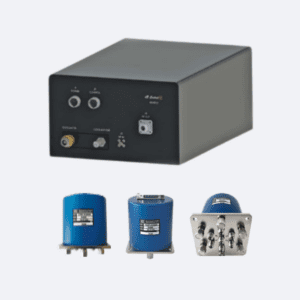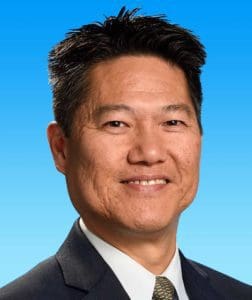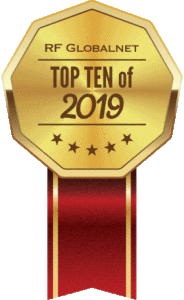Interview with Mike Lee from dB Control
everything RF recently interviewed Mike Lee who is the Vice President of Marketing and Sales at dB Control. Prior to joining dB Control, Lee was western regional sales manager at Comtech Xicom Technology where he used his expertise to exceed several sales goals. While at IBM from 1989 to 1991, he received a US Patent for his electrical circuit design. Lee earned a Bachelor’s of Engineering in Electrical Engineering from The City College of New York.
(This article originally appeared on everything RF)
Q: Can you tell us about dB Control? When was the company formed and what were the objectives?
Mike Lee: Established in 1990, dB Control Corp. supplies mission-critical, often sole-source, products worldwide to military organizations, as well as to major defense contractors and commercial manufacturers. dB Control is a subsidiary of the Electronic Technologies Group of HEICO Corp., a publicly traded aerospace and electronics company with more than 60 subsidiaries. dB Control designs and manufactures reliable high-power TWT Amplifiers (TWTAs), microwave power modules (MPMs), transmitters, high- and low-voltage power supplies, and modulators for radar, electronic countermeasures (ECM), and data link applications. The modularity of dB Control’s designs enables rapid configuration of custom products for a variety of platforms, including ground-based and high-altitude military manned and unmanned aircraft.
Acquisitions in 2019 (TTT-Cubed, Inc.), 2021 (Paciwave, Inc.) and 2022 (Charter Engineering, Inc.) have added the following to the company’s product offerings: custom RF sources and receivers, RF and microwave components and integrated microwave subsystems as well as precision electromechanical switches and components. The company also offers specialized contract manufacturing and repair depot services from its modern 40,000-square-foot facilities in Fremont, California. dB Control is AS9100D and ISO 9001:2015 certified.
The company as mentioned was formed in 1990 by founders Joe Hajduk and Peter Dahl who worked in the TWT industry and objective was to form a company with innovative high-voltage power supplies to integrate with the TWTs that were available in the industry at the time so that customer would be able to buy high power amplifiers to meet their requirements in the market. The concept was to bring engineering and manufacturing together as a cohesive unit, and foster an environment where high-quality products, not money, are the primary goal.
Q: What market segments do you cater to? Which segment is the largest for you?
Mike Lee: dB Control- dB Control has quite a few markets we support from our core products which dB Control was founded on to the products we now design and build through our acquisitions. We cater to the following market segments:
- Electronic Counter Measures (ECM),
- Radar,
- Radar Simulation,
- Electronic Warfare (EW),
- EW Threat Simulation,
- Military Communication,
- Electronic Attack Detection,
- Airborne RF Recorder,
- Test & Measurement,
- Antenna Pattern and Radar Cross Section Measurements,
- Industrial X-Ray
With the latest acquisition of Charter Engineering, Inc. with a complete lineup of electromechanical switches, we now cater to the following additional markets with some overlap of our existing market segments:
- Aerospace,
- Defense,
- Telecommunications,
- Aviation,
- Instrumentation,
- Test and Measurement,
- Base Station,
- Satellite,
- ATE Systems
Our largest market segment is supporting the radar market but we currently have two segments that are ramping up to potentially surpass that market, which are EW and MIL Satcom.
Q: Can you tell us about your product portfolio? What product segment within this portfolio is the largest for you? Which one has been growing the fastest?
Mike Lee: Our product portfolio consists of the following to support very harsh MIL environments as well as commercial applications:
- TWTA, MPM, SSPA, High Voltage Power Supplies (HVPS) and Low Voltage Power Supplies (LVPS)
- Custom Radio Frequency (RF) Receivers and Sources
- FLO – Frequency Locked Oscillators, IFM – Instantaneous Frequency Measurement units, DCU – Digital Control Units, ACU – Antenna Control Units, IDCU – Integrated DCUs & other custom products
- Custom RF& Microwave Components
- PIN Diode Switches
- PIN Diode Switch Matrices
- Integrated Switch Assemblies
- Voltage Controlled Oscillators
- Electromechanical Switches
- SPDT, SP3T-SP12T, DPDT, DP3T, NON-TERMINATED (REFLECTIVE),
TERMINATED (ABSORPTIVE), DC-40 GHZ, SMA, TYPE N, TYPE SC, 2.92 mm
- SPDT, SP3T-SP12T, DPDT, DP3T, NON-TERMINATED (REFLECTIVE),
The largest product group is our TWTA, MPM, SSPA, High Voltage Power Supplies (HVPS) and Low Voltage Power Supplies (LVPS) which the company was founded on. We continue to grow this segment organically at a very good rate. But we see very good growth and potential in the Custom RF& Microwave Components and the Electromechanical Switches products now.
Q: Does dB Control develop standard catalog products or do you develop custom products based on the need of a customer? What is the break-up of these two segments as a % of revenue?
Mike Lee: dB Control has some standard catalog products but most of our customer require custom products to meet their requirements which we cater very well to with our modular designs which allows us to customize products very quickly to meet SWaP-C and specification compliance. The Electromechanical switches are more catalog products but with the ability be customized as well.
Q: dB Control manufactures a wide range of TWT amplifiers – Can you tell us more about this product range? How do TWT Amplifiers compare to Solid-State GaN Amplifiers? Do you see these amplifiers getting replaced by Solid State Amplifiers in the next few years? Why or why not?
Mike Lee: We develop high-power amplifiers and our specialty is the HVPS (output voltages up to 50kVDC) and LVPS (Output options of Single outputs 6 VDC to 48 VDC up to 70 A and Multiple outputs +/- 5 VDC, 12 VDC, 25 VDC) so the output devices are agnostic to our designs. We will select the output device, TWT or GaN SSA or other output devices, and we then integrate either our HVPS or LVPS with the output devices and then package them into a TWTA, SSPA or MPM outline to meet the customer requirements. We will build the HPA to meet the specification compliance.
We will develop TWTA, MPM ranging from 1 GHz to 66 GHz and many shapes, weights, sizes, cooling (air, conduction, liquid), prime power (28 VDC, 270 VDC and 115V to 380 VAC). SSPAs range from 1GHz to 18 GHz and as GaN devices matures, we will support higher frequencies with the same options as described above for TWTAs and input options also Single voltage 600 VDC to 1400 VDC and Multiple high voltages 2KV, 4.5 KV.
Ther are pros and cons of TWTAs vs GaN SSPAs which I wrote a paper on which I can share with you if you would like but may need some updates with the advancements in GaN devices.
We see GaN SSPAs working well with TWTAs and both serve their markets. We see them complimenting each other. We do use GaN SSA’s as a driver stage to our TWTs in our TWTA and MPM products. Eventually, as GaN SSAs gain maturity, they will replace the TWT in the lower frequencies in our HPA output device but innovations in TWT technology will allow for much higher millimeter-wave frequencies at higher power and efficiencies. So as GaN catches up, the TWT will always have a home and market.
Q: Can you tell us more about the integrated microwave subsystems that you develop? What are some interesting IMAs that you have developed?
Mike Lee: Some examples:
- PIN Diode Switch Matrices
- Vertical Integration and High Isolation
- Integrated Switch Assemblies
- Adding Filters and Amplification
- VCO
- Low Phase Noise, Phase Locked, and Custom Integrated Designs
- Integrated Stabilized RF Sources (ISRFS)
- Alternative to Synthesizers. While synthesizers can achieve fast signaling times, they can’t be easily modulated in FM. An ISRFS unit is specifically designed for radar, radar simulation, ECM, EW Threat Simulation, and Test and Measurement, costing 4-5 times less than a synthesizer. We also offer four types of modulation (AM, four modes of FM, Phase and Pulse), high accuracy, and wide temperature operating range.
Q: Apart from the power amplifiers and microwave subsystems, dB control also has a range of RF receivers and signal generators. Is this an important segment for you?
Mike Lee: With the acquisition of TTT-Cubed, we picked up the Custom Radio Frequency (RF) Receivers and Sources. Product line includes FLO – Frequency Locked Oscillators, IFM – Instantaneous Frequency Measurement units, DCU – Digital Control Units, ACU – Antenna Control Units, IDCU – Integrated DCUs & other custom products. It opened up new and important markets for dB Control as follows:
- Electronic Attack Detection, Airborne RF Recorder, Radar Simulation, EW Threat Simulation, Test & Measurement and Antenna Pattern and Radar Cross Section Measurements.
Q. Developing and testing RF products for Aerospace and defence can be challenging. What are some of the challenges that you face? How do you design and test your products to ensure performance in challenging environments?
Mike Lee: We develop and manufacture products are our 40,000 square foot facility in Fremont, CA which includes winding our own transformers and inductors as well as a full encapsulation lab to pot our high voltage modules. We have full RF testing and Environmental Stress Screening inhouse. We can test all our products at temperature, altitude, thermal shock, shock, vibration and HALT/HASS to ensure that we screen out any potential design issues at our factory before we ship the products to our end customer. Plus through decades of experience, we order parts to dB Control specifications and rarely buy COTS parts to ensure that we have a robust design with higher margins to support our customer requirements.
Q. In 2022, HEICO, the parent company of dB Control acquired Charter Engineering, Inc. – Can you tell us more about this acquisition and how it has played out? Have there been any synergies?
Mike Lee: The acquisition has brought an electromechanical switch line to our product portfolio and we see many synergies in the market segments as well as the end platforms we were supporting through our core TWTA, MPM and power supply product lines. But in addition, it opened up new opportunities and market segments to support both commercial and MIL market so it is a win-win combination for dB Control and we will continue to grow this product line and market share as well.
Q. Who are your customers? Where are they located? What is a % break up in terms of geographic region?
Mike Lee: Our customers are worldwide with about 70% coming from the U.S.A. We support all of the armed forces in the U.S.A. and also ally Foreign MIL also. We also support the MIL Integrators in the U.S.A. and around the world.
Q. What does 2024 look like for dB Control? Are there any new solutions or products on the horizon?
Mike Lee: We have grown in sales and backlog year on year and have a very strong start to 2024 so we see ourselves growing year on year into the future. As turmoil and the “bad guys” continue to innovate, the U.S.A. will continue to combat those threats to keep the world and our allies/neighbors safe. Out products will always innovate and we always research leading and bleeding edge solutions to support our customers so we see innovations to higher millimeter-wave frequencies and of course, higher power, at the same time catering the customer’s SWaP-C requirements.

